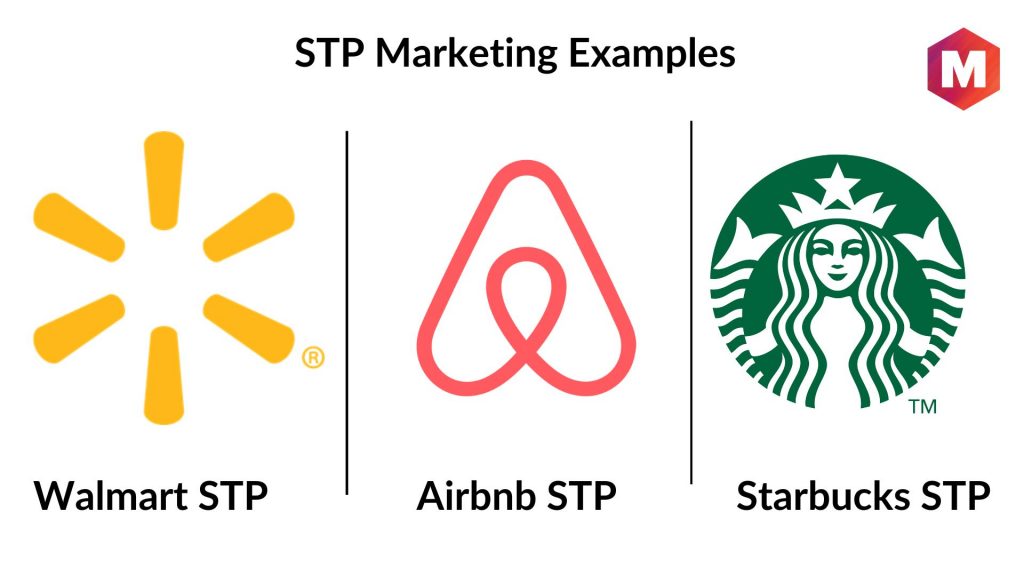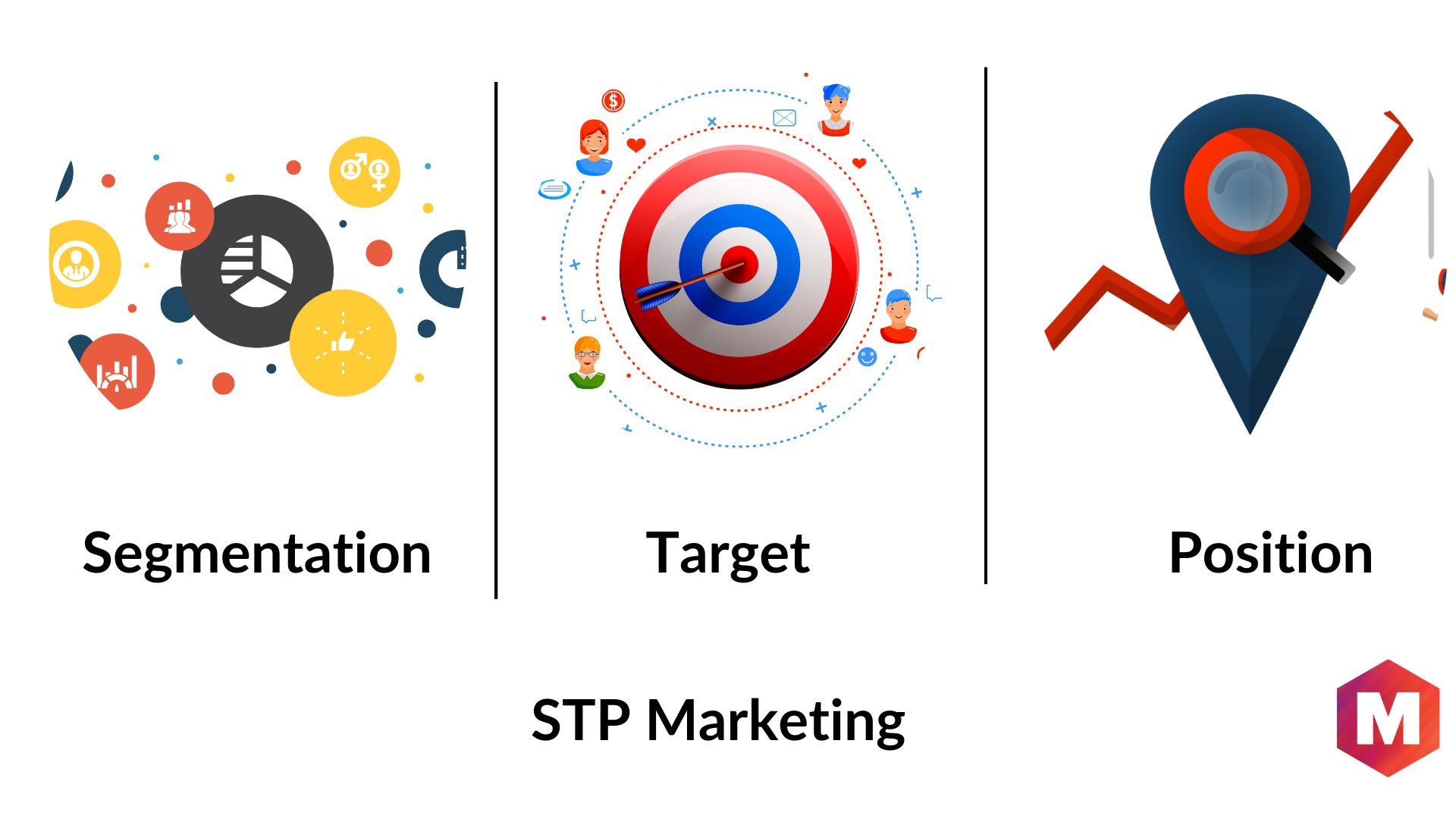Marketing91
By Filed Under: Marketing
The STP Marketing Model can be utilized for assessing how you communicate the advantages and worth of your product to various segments and enhancing your product offering. The acronym STP stands for the following three steps in marketing strategy –
For example, a smartphone company might segment its market into age groups like teenagers, adults, and seniors. Based on the target market, they can then determine which product features to provide that will be most suitable for their target audience. Finally, by highlighting its benefits and value, they will position their product in the market.
Table of Contents
The STP marketing model is composed of three steps: Segmentation, Targeting, and Positioning. This model analyzes your products or services and how you promote their advantages to particular groups of customers.
Simply put, the STP marketing model involves dividing your market into segments, directing marketing efforts towards specific customer groups based on their preferences, and adapting your brand positioning to meet their expectations.
The model can be helpful in identifying your most valuable customer types. Then, you can create products and marketing messages specific to each group. This approach can improve your engagement with the target audience, personalize your messaging, and boost your sales.
To improve your marketing, it’s best to split your customer base into smaller groups using STP marketing. This allows you to create personalized marketing plans for each audience, effectively reaching and engaging them.
Personalization has a significant impact on customers’ shopping decisions.
According to Yieldify, the majority of consumers (75%) have expressed interest in purchasing from brands that provide personalized digital experiences.
While a report by Salesforce suggests that 74% of Gen Z individuals show interest in personalized products, which is higher than the figures for Millennials (67%), Gen Xers (61%), and Baby Boomers (57%).
STP’s marketing approach focuses on the customers instead of the product. This shift helps businesses understand their ideal customers and how to effectively reach out to them. By tailoring marketing efforts to the customers’ preferences, the chances of success increase.
Phillip Kotler, who is currently the S.C. Johnson & Son Distinguished Professor of International Marketing at the Kellogg School of Management, Northwestern University, developed the STP model.
He has written multiple books, including the renowned “Marketing Management,” now in its eleventh edition, and is a significant presence in the marketing industry.
In a highly competitive market, only a few businesses can survive. However, if you have a small market share in a niche market, it can lead to increased profitability. By catering to a specific group of people with unique needs or desires, your business can thrive.
Adapting to the changing needs of your customers can help increase their satisfaction with your business, leading to growth and revenue in the long run.
The STP marketing model, which stands for Segmentation, Targeting, and Positioning, is a widely-used approach in modern marketing that many marketing leaders find to be efficient and streamlined.
The STP marketing approach involves identifying the most valuable customer segments and creating unique marketing strategies for each of them. Marketing technology advancements have enhanced the ability to effectively segment, target, and position, leading to improved business effectiveness.
In order to effectively utilize STP, it is important to assess your customer engagement, conversion, and retention regardless of your experience level.
Marketing communications can better reach desirable audiences by using audience-focused methods like segmentation, targeting, and positioning instead of product-focused approaches.
Using STP is important for strategy and planning. Effective STP impacts your planning activities and influences the types of customers you reach, interact with, convert, and engage.
To effectively meet the needs of different customers, it’s important to use market segmentation. This means dividing your customers into groups based on common characteristics and needs. By tailoring your approach to each group, you’ll have an advantage over competitors who use a universal approach for all customers. You can segment your target markets in various ways –
For example, if you’re marketing a new car model, you might want to target people in a certain age range or with a certain income level.
After dividing your market into segments, you need to identify the customer segment(s) with the highest value and focus on targeting them.
To determine the most profitable group, you must identify the segments that will yield the highest return. There are various factors that you should take into account for this decision –
To effectively target valuable customer segments, you must determine the functional positioning strategy for your product. Additionally, you need to choose which marketing mix will be most effective for each targeted segment.
To attract potential customers, it is important to highlight the distinctive advantages and characteristics of your product as compared to your competitors while making decisions regarding the product positioning map.
To improve your product’s positioning, start by figuring out its unique selling point. Then, make a positioning map to see how different customer segments view your product. This will enable you to make informed decisions about how to position your product effectively.
To better understand the wants and needs of different groups, identify the problem your product solves for them. Then, create a clear value proposition that highlights how your product addresses this problem better than competitors, and develop a marketing campaign that effectively communicates this value proposition to your target audience.
In digital marketing, having an effective strategy requires incorporating segmentation, targeting, and positioning. It’s important to create content that has a clear goal and is specifically tailored to the preferences and needs of your target customer group.
Digital marketers can use marketing personas to improve communication relevance at a tactical level, just like in STP marketing. This can be observed through different email customer segmentation methods.
Before launching online campaigns to attract customers, it is important to grasp their online behavior. This includes identifying the platforms and channels they use, where they spend most of their time online, and the type of content that engages them. Utilize this knowledge to craft campaigns that are tailored to the specific preferences of your target customer segments.
To understand the STP process, let’s go through some of the examples to understand the role of segmenting, doing target market research, and analyzing positioning factors –
Walmart is a prime example of a market leader who places a strong emphasis on segmentation, targeting, and positioning. They have made it their goal to offer all members of the family high-quality goods at reasonable costs.
Walmart has therefore had to market to a diverse group of customers with various wants and tastes. They, therefore, employ lifestyle segmentation to target those who are more inclined to shop in their stores as well as demographic segmentation to target clients based on age, income, gender, and other factors.
Additionally, Walmart has done a fantastic job of portraying its goods as being inexpensive and available to everyone. They are able to draw customers who may be on a limited budget or those who just want to discover the best deal on a product by continually offering low prices. Additionally, Walmart is able to provide customers with a huge selection of reliable products thanks to partnerships with well-known companies like Coca-Cola and Tide. Customers will have an easier time finding what they need as a result without having to give up quality. One of the biggest retailers in the world, Walmart, has achieved success by implementing a successful STP strategy.
Airbnb is a great example of how you can use STP marketing to your advantage. They have targeted and positioned themselves effectively by focusing on the traveler segment.
By offering an affordable alternative to traditional accommodations, they are able to appeal to those who may be looking for budget-friendly options while still being able to enjoy the comforts of home. Airbnb also offers a variety of price ranges, making it easier for customers to find exactly what they are looking for within their budget.
Additionally, Airbnb has positioned itself as the go-to platform for unique accommodations and experiences by offering listings in over 191 countries and regions around the world. This makes it easy for travelers to access accommodations in places they may never have dreamed of visiting before. By utilizing effective STP strategies, Airbnb has become a household name for travelers around the world.
Starbucks is another example of a company that has utilized effective STP strategies. They have carefully targeted and positioned themselves as the go-to destination for coffee drinkers looking for high-quality beverages, snacks, and experiences.
By offering a variety of products and services to meet different needs, they are able to appeal to a wide range of customers. Starbucks also offers a loyalty program, which is designed to reward loyal customers and keep them coming back.
Additionally, they have positioned themselves as a place for people to come together and relax, appealing to those who may just need a break from their day or want to socialize with friends. By utilizing an effective STP strategy, Starbucks has been able to become one of the most recognizable brands in the world.
Using STP (Segmentation, Targeting, and Positioning) in marketing can help you create tailored and effective marketing communications.
Instead of creating broad messaging that appeals to a wide audience, you can create personalized messaging that appeals to the specific niche you have chosen to target. The marketing campaign will likely achieve better results, with increased engagement from the target audience, a higher rate of sales conversions, and optimized brand loyalty.
Marketing analytics plays a crucial role in creating and accurately analyzing market segments for STP in marketing, just like many other marketing processes. To create effective marketing campaigns, marketers will require marketing analytics software that can examine particular demographic and behavioral information in depth.
Using STP marketing can help companies run more effective campaigns. It’s beneficial for digital businesses, and there’s no reason to avoid it. Thanks to the abundance of data available today, the process has become easier than before while yielding the same great benefits. Are you interested in implementing email and SMS marketing strategies for your STP campaigns?
Liked this post? Check out the complete series on Marketing
Hi, I am an MBA and the CEO of Marketing91. I am a Digital Marketer and an Entrepreneur with 12 Years of experience in Business and Marketing. Business is my passion and i have established myself in multiple industries with a focus on sustainable growth. You will generally find me online at the Marketing91 Academy.
Leave a Reply
Your email address will not be published.
![]()
MORE INFO
WE WRITE ON
Copyright © 2023 Marketing91 All Rights Reserved
STP Marketing: Segmentation, Targeting and Positioning – Marketing91

